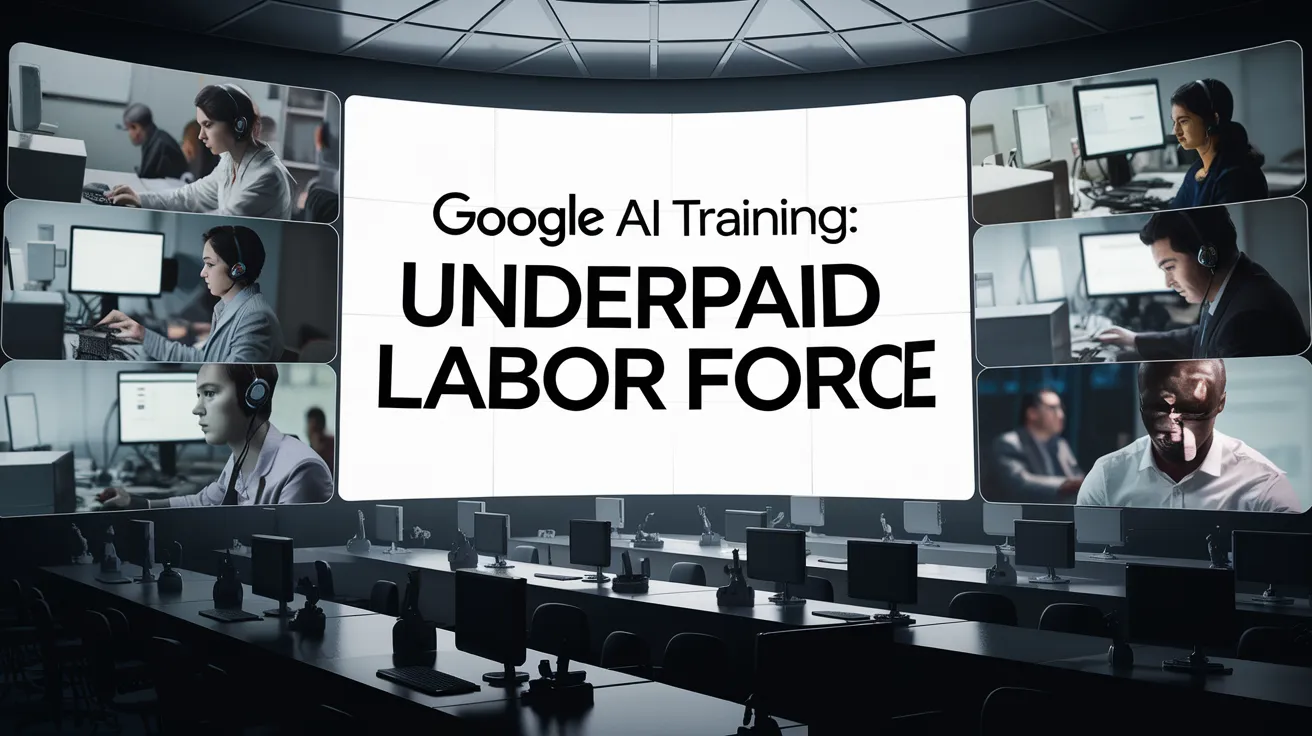Google AI Training: Underpaid Labor Force

In the spring of 2024, Rachael Sawyer, a technical writer from Texas, found herself unexpectedly working for Google as a contracted AI rater. What she assumed would be a position focused on content creation quickly turned into a role of moderating and rating AI-generated content, exposing her to distressing material without proper preparation or consent.
Sawyer’s initial tasks included parsing meeting notes and reviewing various AI outputs, but her responsibilities soon shifted to exclusively managing extreme content such as violent or sexually explicit material. This unexpected turn not only shocked her but also resulted in heightened anxiety and panic attacks, compounded by the lack of mental health support from her employer.
Thrust into the AI Rating Workforce
Thousands of individuals like Sawyer are contracted through Hitachi’s GlobalLogic to ensure the output of Google’s AI products, including its chatbot Gemini and AI Overviews, meets safety standards. Despite the significant work they perform, these raters operate in relative obscurity, earning higher wages than data annotators in places like Nairobi or Bogota, yet nowhere near what AI engineers in Mountain View make.
As AI models continually evolve, the demand for quality control has intensified. These raters work tirelessly to ensure accurate and safe responses across various domains, but many express feelings of being overlooked and undervalued. As Adio Dinika, a researcher, noted, the system relies on a “pyramid scheme of human labor”, where those at the bottom, including AI raters, are essential yet treated as expendable resources.
The Toll of High Expectations
Surveys conducted by The Guardian reveal a troubling trend among AI raters; many feel overwhelmed by the job’s mounting pressures. Tighter deadlines have forced some workers to hastily process hundreds of words in mere minutes, raising concerns about the overall quality and safety of AI products. One rater reflected on how she was once invested in contributing positively to AI development but became disillusioned as she faced increasingly unreasonable demands.
Sawyer’s struggle is compounded by the fast-paced, cutting-edge environment of AI production, where her qualitative ratings directly affect how chatbots interact with users worldwide. Despite this vital role, those involved in this labor often remain unaware of how their input shapes the final product, cultivating a culture of secrecy and frustration.
The Challenges of Moderation
Moreover, the role of an AI rater often entails rating AI responses without adequate information or training, leading to potential inaccuracies. Employees frequently report working with vague guidelines or newly imposed rules that shifted too quickly for effective enforcement. These challenges highlight the ethical complexities of creating AI and the struggle for workers who strive to maintain quality in a rapidly evolving landscape.
In retrospect, the pressure surrounding deadlines often leads to an environment where ensuring the content is not only accurate but also aligned with ethical standards becomes a secondary concern. In recognizing these dynamics, significant opportunities for improvement and support are evident.
The Pressing Ethical Dilemma
Attempts by Google to loosen restrictions around AI outputs have sparked controversy, particularly regarding hate speech and sensitive content. Recent changes suggest that responses are now permissible as long as they are not directly generated by the AI, prompting fears among raters that ethical standards are being compromised for efficiency and profit.
As the AI industry grows, concerns about job security for raters have emerged, mirrored by rolling layoffs at GlobalLogic. Workers feel increasingly disillusioned not only with the work but also with the end products they help generate. Many have begun to actively discourage friends and family from engaging with AI technology, fostering a tangible disconnect between AI operations and societal trust.
Ultimately, the labor force behind AI, such as Sawyer’s experiences, challenges the notion that AI is an impressive feat of technology when, in reality, it rests on the shoulders of underpaid and overworked individuals. This reality raises profound questions about the ethical implications of AI and the responsibilities of tech companies to those who labor to keep the systems running.
As influenced by Sawyer’s poignant observation, it is crucial to understand that AI’s perceived magic is rooted in the intense labor of countless individuals striving to make it seem intelligent.